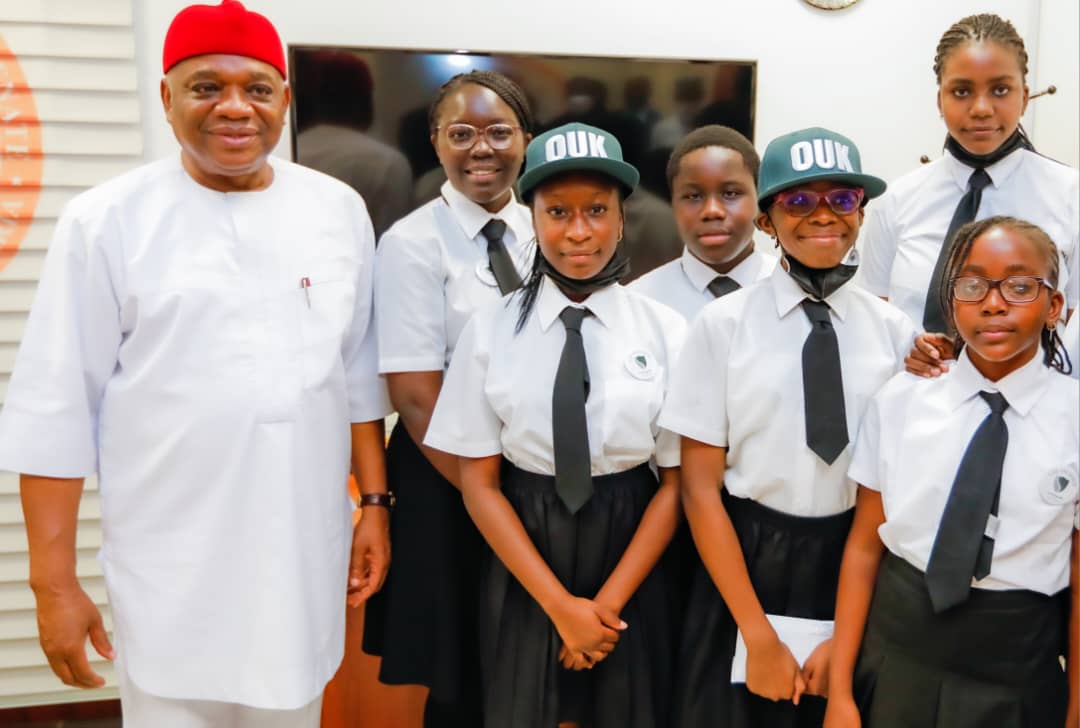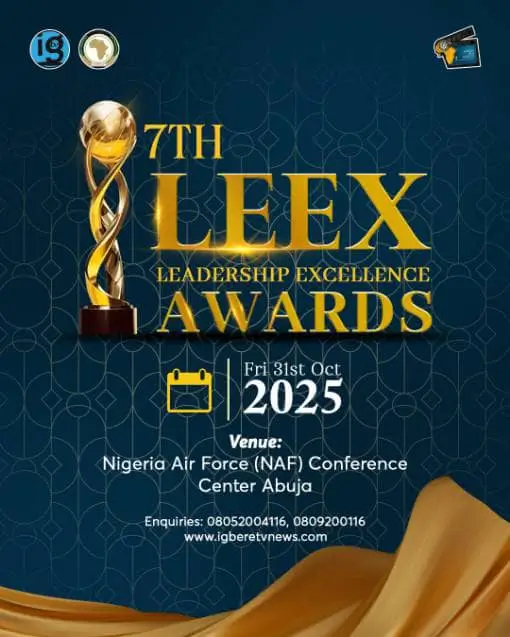By S. O. Idika
Generation Z (often shortened to Gen Z), is a term used to describe people born during the late 1990s and early 2000s. Some sources give the specific year range of 1997–2012, although the years spanned are sometimes contested or debated because generations and their zeitgeists are difficult to delineate.
Lately, members of Generation Z, or Gen Zers, have been undeniably shaped by some events in Nigeria like the COVID-19 pandemic, the 2020 EndSars protest, and the events of the 2023 general elections.

They grew up in the era of the iPhone, which debuted in 2007.
Invariably, some of them (not all) judge by what they read or hear about their leaders.
In this article, I attempted to highlight some of the achievements of the former Abia State Governor, Senator Orji Uzor Kalu (1999—2007), who governed Abia State when members of the Generation Z were either young or not born.
In 2002, the Federal Government under Olusegun Obasanjo set up a Media Tour Team to carry out an assessment of all the projects executed by the various state governments in the country. The team to Abia State was led by Chief Smart Adeyemi (then National President of the Nigeria Union of Journalists and Senator). Overwhelmed by what his team saw in Abia, he confessed that no government in Nigeria would have done what was going on in Abia State with the little resources that accrued to it.
Interestingly, at the end of the overall tour, Rivers State came first with total revenue from the federation account of N59 billion, while Abia State came second with N15.4 billion. In the 14 indices the team based its report on Abia State scored 63 per cent in Education, 65 per cent in Health, Urban Water Supply 66 per cent, Rural Water Supply 60 per cent, Urban Roads 75 per cent Rural Roads 65 per cent, Agriculture 63 per cent, Industrial Development 63 per cent, Poverty Alleviation 61 per cent, Housing 69 per cent, Rural Electrification 62 per cent, Crime Control 64 per cent, Environmental Sanitation 64 per cent, and Sports Development 73 per cent.
From the assessment tour report it was clear that the Orji Uzor Kalu administration ensured even development of the state. He did not concentrate development at the urban centres, because he knew deep inside him that wherever projects were executed, the joy of the people would resonate in every nook and cranny of the state. His priority was the welfare of the people.
During the days of Governor Orji Uzor Kalu, agricultural programme was about the best in the country at the time. He planted thousands of hectares of palm, cashew, pineapple, rubber and other food
crops. He grew enough to satisfy local needs of Abians.
Life in Abia State was generally very good then. It was always a happy moment for football lovers in Aba during weekends—because of his huge investment in Enyimba Football Club. Civil servants and other categories of workers got their pay and promotions when due, and attended courses regularly, which enhanced their productivity. It is on record that during his days as governor, university lecturers did not embark on any strike— as their welfare was a priority—making Abia State University one of the very best in the country.
For the ordinary citizens of the state, including market men and women, they lived and did their business in an atmosphere of congeniality and progress.
It was Orji Uzor Kalu’s administration that built the Abia State University Teaching Hospital (ABSUTH) in Aba, Built 15 General Hospitals, Built Okpara Auditorium to the state in which it was before Theodore Orji took over. The Aguiyi-Ironsi Conference Centre, Legislators’ Offices, all the Housing Estates in the State, Joint Allocation Committee (JAC) building, Commissioners’ Quarters, staff quarters in Lagos and Abuja, the gigantic Abia House, Abuja, and the Aba and Umuahia Township Stadia were built by his administration.
He successfully initiated and completed in Aba: Cameroun Road, Ojike Lane, Ehere, Ehere Road Extension, Umuola, and All Saints’ Academy – all handled by Grandstar Construction Company Limited? What of Umuahia? We did the following roads: Igbere, Aguiyi-Ironsi Layout, 4 Nos. Roads in Government Station Layout, Okigwe Park, Aba Park, Agulu, Olokoro, Awkuzu, Cameroun, Orlu, Nkwerre, Timber, Afara, Niger/Asaba, Asphalt overlay at Mater Dei Cathedral, Okigwe Park Link Road, Nkwoegwu to Express, Umuobasi, Oba, Car Park and Extension of Arochukwu Street, Ohuhu, Olokoro Street with spur to Olokoro Crescent, Eze Ogbulafor, and Nsukka.
Apart from Umuahia and Aba that took the large chunk of the roads, he also undertook gigantic road projects across the state, especially in the rural areas. They included the following: Owaza-Obehie-Azumini in Ukwa East (over 40 kilometers), Ekenta Igbere, Asaga-Ndibe-Amuma-Okon-Amangwu in Ohafia, Nkwoegwu Ring Road in Umuahia North, Abiriba Ring Road, Umuikea-Omoba in Isala Ngwa South, Ndiro-Irunta in Ikwuano, Umuchieze-Leru-Lomara-Nneato in Umunneochi (over 20 kilometers), Ururuka – Acho Nwakanma’s residence in Obingwa Local Government (the Acho Nwakanma’s stretch was over 10 kilometers), and all the roads in Ikwuano. He also started some roads which successors deliberately refused to complete. They included Igbere-Umuhu, Mbawsi, Nunya, and Alayi-Ugwueke-Ebony State.
He also did some roads in Igbere. They included: Central School Road, Amankalu I, Amankalu II/Ibinaukwu, Access Road to Okafia, Golf Road with Drain, and Umuobasi.
Working in conjunction with the Education Tax Fund (ETF), he was able to transform our school system. While parents grappled with high school fees and poor service-delivery, he undertook a survey of all the dilapidated schools in the state, and the figure was mindboggling: 1,250. Again, many of the schools lacked teaching aids, science equipment and qualified teachers. Added to this were the unpaid arrears of minimum wage of teaching and non-teaching staff, running into several months.
Through the State Primary Education Board (SPEB), his government executed the following projects at the various primary schools in the state: tuition-free education at public schools, renovated 821 dilapidated schools, constructed 524 new classrooms, provided 155,000 desks/benches, 1,700 chairs, provided 1,800 first aid boxes, printed and procured instructional materials, reviewed the Abia State Curriculum module to cover such important subjects as Igbo, Agricultural Science, Physical Education and Health Education.
He also maintained regular subventions to all the tertiary institutions in the state, including SPEB and SEMB. In addition, he built new hostels at ABSU, provided it with a 500KVA generator, 1414 bus to the SUG and 16-seater bus for the management.
With some of the achievements I listed here, and judging from the fact that the state earned little above N100 billion in eight years, it is now obvious that the members of Generation Z have been lied to by people they should have trusted to listen to about the performance of their leaders.






